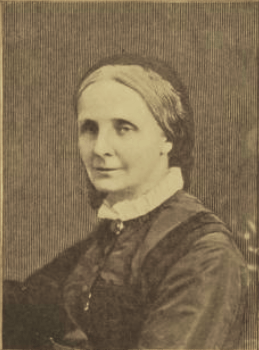Mary Anne Sadlier facts for kids
Mary Anne Sadlier (born December 31, 1820 – died April 5, 1903) was an important Irish writer. She wrote many novels and stories, especially for Irish people who moved to the United States and Canada. Her goal was to help them keep their Catholic faith and traditions. She also wrote about big topics like unfair treatment of Catholics, the terrible Irish Famine, moving to a new country, and working in homes. You might also see her books listed under the name Mrs. J. Sadlier. Earlier in her career, from 1840 to 1845, some of her works were published under the name "Anne Flinders".
Contents
Her Life and Writing Journey
Early Life and Move to Canada
Mary Anne Madden was born in Cootehill, County Cavan, Ireland, on December 31, 1820. After her father, Francis, passed away, Mary moved to Sainte-Marthe, Quebec, Canada, in 1844. There, she married James Sadlier, who was also from Ireland, on November 24, 1846. James was a publisher.
Mary Anne Sadlier wrote most of her books after she got married. While living in Canada, she published eighteen books. These included novels, short stories, a religious book called a catechism, and nine books she translated from French. She also wrote many articles for magazines without asking for money.
Writing for Irish Immigrants
Sadlier often gave her articles away for free because she supported Irish causes. While in Montreal, she wrote two novels set in Ireland. These were Alice Riordan; the Blind Man's Daughter (1851) and New Lights; or, Life in Galway (1853).
In New Lights, Sadlier wrote about the Irish Famine for the first time. This book became very popular and was printed many times. In this novel, Sadlier strongly criticized a practice where some Protestants tried to convert Irish peasants by offering them food. However, she also spoke against violence from the peasants. Sadlier published much of her work in her family's Catholic magazine, The Tablet.
Friends and Inspiration
In the early 1860s, Mary Anne and James Sadlier moved to New York City. Their home became a busy place for Catholic writers and thinkers. Mary Anne also enjoyed spending time with other Irish writers in the United States and Canada. These included important figures like New York Archbishop John Hughes and editor Orestes Brownson.
One of Sadlier's closest friends was Thomas D'Arcy McGee. He was a poet, an Irish nationalist, and a Canadian statesman. He is known as one of the "Fathers of Confederation" who helped Canada become an independent country.
McGee and Sadlier both believed in creating "national poetry." This kind of poetry would not only show the spirit of a people but also inspire them to seek political freedom. McGee, as a man, could join political rallies and organize support for Irish independence. Sadlier, as a woman, put her support for Irish independence into her writing.
McGee's biographer noted that Sadlier's success inspired him to write novels about immigrants. Sadly, McGee's strong political views led to his death in 1868 when an Irish-American radical killed him. His death was a very sad event for Mrs. Sadlier and her husband, who were his good friends. In 1869, Sadlier edited a collection of McGee's poetry to honor his memory.
Later Life and Legacy
In her later years, Mary Anne Sadlier lost the rights to her earlier books. However, many of them continued to be printed. In 1902, she received a special blessing from Pope Leo XIII. This was for her "illustrious service to the Catholic Church," meaning her great work for the Church. Sadlier stayed in New York for nine years before returning to Canada, where she passed away in 1903. One of her daughters, Anna Theresa Sadlier, also became a writer.
Books by Mary Anne Sadlier
- Confessions of an apostate (1842)
- The "field of honour ; or, "scenes in the nineteenth century" (1844)
- Naboth the Jezreelite; and other poems (1844)
- The Red Hand of Ulster; or, The Fortunes of Hugh O'Neill (1850)
- Willy Burke; or, The Irish Orphan in America (1850)
- The Blakes and Flanagans, A Tale Illustrative of Irish Life in the United States (1855)
- The Confederate Chieftains: a Tale of the Irish Rebellion of 1641 (1860)
- The Babbler; a drama for boys, in one act (1861)
- Bessy Conway; or, The Irish Girl in America (1861)
- Elinor Preston: or, Scenes at Home and Abroad (1861)
- The Pope's Niece, and Other Tales (1862)
- Old and New; or, Taste versus Fashion (1862)
- Confessions of an Apostate; or, Leaves from a Troubled Life (1864)
- Con O'Regan; or, Emigrant Life in the New World (1864)
- Aunt Honor's Keepsake (1866)
- The Secret (a drama) (1873)
- The Young Lady's Reader (1882)
- The Old House By The Boyne (1888)
- Alissa Flecq (1894)
- New Stories (1900)


